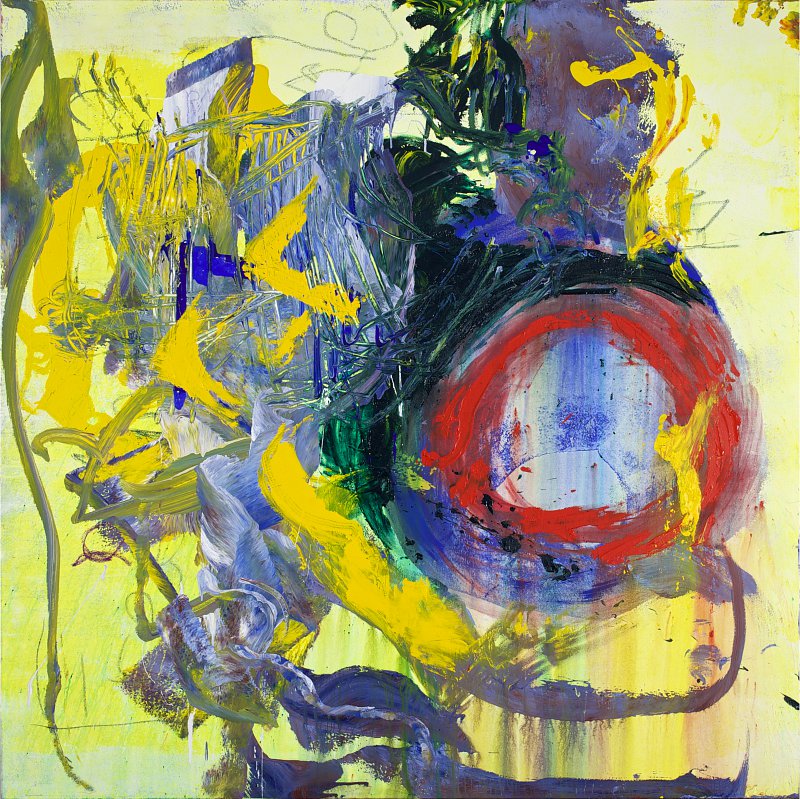11.05.2011
A Painter of Accumulations
Ross Mullane is a dignified and articulate man. His physical manner gestures like the lines in many of his finest drawings. His voice moves rhythmically up and down from left to right in a song like manner of considerable charm. He moves slowly round the room similar to the way that he marks his canvases - that wide brush stroke filled with colour. A stream of peripheral lines stage his poetic structures. He is an internal painter and something of an outsider. He works as a solitary messenger.
Works from the artist’s studio are typically produced with oil and acrylic paint on canvas and paper - with crayon and pastel lines. The control and use of colour is certainly the most passionate aspect of his work. Their chromatic depth is extended into the painterly surface using ground up pigments to achieve zones that are remarkable in their richness and density. The canvases appear saturated and you can stare deeply into their inner space. From this gaseous substance emerges a most playful domain wiped into place by his hands and fingers or wiped gently across or stabbed at to form a series of marks and signals.
Mullane often finalises his paintings with graphic elements. He draws onto the surface in what appears to be a kind of schematic mapping structure. His paintings could be called the mappings of the outer world – spaces, surfaces and objects in light. Yet his paintings are intimate constructions and they form with a curious depth of field that’s articulating his gestural trace of life
During the evening Mullane will work drawing on paper. Drawing has an intimacy and immediacy that’s maintained by the ratio of body to form. His drawings do not operate as a study for the forthcoming paintings. They are beautiful objects in on their own right. They are delicately structured abstract fusions of chalk and soft ground pastels that show a remarkable intensity. Colour is the artist’s absolute passion. He vigorously rubs and stains the pigments into the surface then overlays painted areas on the thick sheets of paper. At other times his structure is reversed. Like his canvases the drawings are inhabited by graphic actions and marking systems. Sometimes the contours of a figure appears in the image and occasionally elements of collage have been incorporated. This method of mapping in his painterly surface allows us to scrutinize the schema of constructed image as visual experience.
What is also interesting in Mullane’s paintings and drawings is the nocturnal-waking quality of those events and time. There is a time scale laid out in his schematic plans – and a sense that this formal trace once existed inside an internal twilight zone.
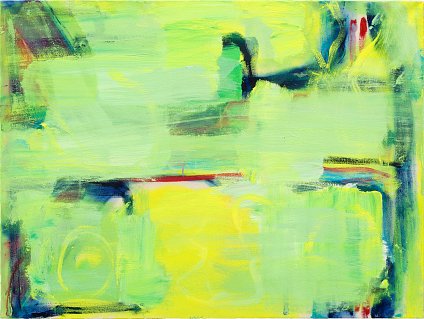
2014-05-06
"Green Landscape".
980 x 700
Oil, Acrylic, Pastel

2014-03-09
Yelllow Shore
980 x 700
Oil, Acrylic, Pastel
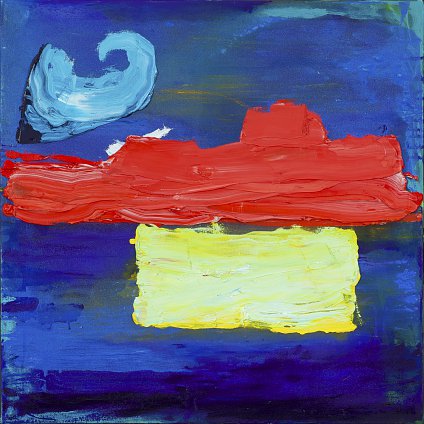
2014-07-09
Porkpie Hat,
70 x 70
Oil
in the colour-light that these paintings emit - there is an uncanny sense of place
2
Music
Ross Mullane will talk about the musical experience that brings him constant pleasure. He’ll talk about the motions and spaces and structural aspects of a wide range of classical and romantic musical forms and composers. His studio is also a musical library. Mullane understands how the rhythmic form of music has often engaged in the way he places the parts of the image world together – that there is a critical cross-reference system operating although his paintings are not objects displaying a condition of colour-sound synaesthesia. These works of art demonstrate an modern attitude akin to the synchronism of Robert Delaunay or the orphism of Fransika Kupka. Music sound and noise have often been the stimulant behind forms of abstraction.
3
The Sea
Ross Mullane’s work has preoccupation with the sea. You find in his various works a sense of being immersed in fluids. His images are rarely representational so you don’t see the edges of the rock pools or an embankment where the water is wet and glistening. But in the colour-light that these paintings emit there is an uncanny sense of place. It’s as though the surface is rendered by someone looking into the world through a watery lens. Here the substance boils and surges forward. Sand drifts into an abstract image. Mullane uses these variants and visual phases as a kind of tracking system of marks and colours that build as optical structures.
Abstract painting is a stranger vehicle than most expressive forms of art. The abstract artists that Ross so admires emerged in New York after their conversations with the late Surrealist painters. Mullane is very conscious of European and American developments in abstract art like Hans Hoffman Nicolas de Staël and Francis Bacon, and he’s part of an Australian abstract painting movement that translates a pure language of vision to this place.
In the mix of things you might recognize the anonymous side of a container ship. The sculpted painting acts like a tabletop where the paint is scraped repainted and scraped back again into place to reveal the exhausted surface of metal. These acts of painting might be the sea images of water viewed on a horizontal axis. Here the colour moves from one side of the painting frame to the other. These interlocking systems of shallow screens allow the painter to enact his unfolding visual dramas.
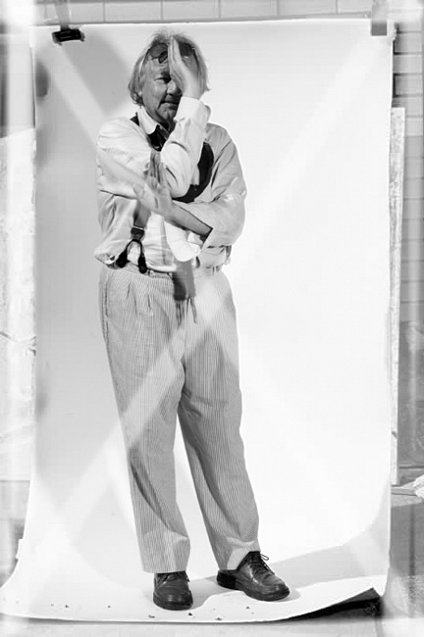
2009-07-11
Ross Mullane
pic ≈ Ian Hobbs
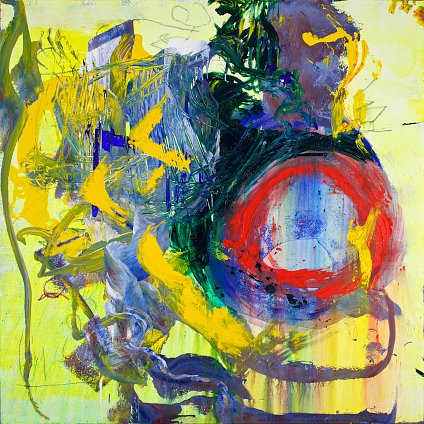
2014-03-20
Fulfilment
1200 x 1200
Oil Wash and Crayon
light pools are formed by seasons of childhood memories
An Industrial Landscape
Many times Mullane covers the space around the perimeter of the canvas with a corridor of assembled signs. At certain points the edge is ruptured. In other positions the edge in the painted phases unite as one. The viscous substance of paint - appears to pour into place. His paintings reflect a fluid element of time. These surfaces come about by action: forms, gestures, curves, points and line. They are consciously structured and the artist can admit the flow of flotsam into the assembly of signs. The sub-conscious is free as it floats and picks up subjects along it’s way. These signals turned back to us from the painter’s tidal limits. Look again and the light pools are formed by seasons of childhood memories.
Remembering his time in the early 1960s Mullane speaks of spending his waking hours on a surfboard submerged out somewhere on that littoral zone. He remembers the pre-dawn phase at the meeting point of rocks and ocean water at Merewether Beach in Newcastle. He draws from memory the transformative moment between night and day on the ruptured line of the Pacific Ocean. This tabletop of surging water has a sense of nautical poetry. That pulse of sound draws along the flowing viscous membrane. Sand and colour. Sensation of light. A watery substance in our dream.
A record of shoreline observations washes through Mullane’s fertile imagination. He knows the scale and sculptural magnitude of industrial shipping. He recalls the clear image of sheet metal and rusted rivets and the painted and scraped surfaces of ocean going vessels. Ross talks about his mother’s family in Newcastle. As a small child his Grandfather would take him along to the docks and go out on the harbour master’s launch. They’d set out to meet the incoming coastal cargo ships. He recalls vividly those early childhood visions and how the business of movement was managed and how their cargo came and left from that often difficult maritime place.
Mullane’s studio is a dark sub-terrain location like a ship’s cabin beneath his comfortable suburban home. It is such a juxtaposition compared with the lightness and the spatial quality of the paintings and drawings he produces there. It’s such a surprise! That studio has low ceilings and dark beams. It has a somewhat foreboding feeling about it. It seems cramped accommodating dozens of paintings of all sizes at all stages of completion. A stack of large timber panels rest up against one of the opposite walls. The floor is a painter’s midden. Fallen litter of empty tubes, of paints and jars and pigment slops and patches of smudged paper and rags. There are numerous easels covered with the dribble of his residues. That crypt-like atmosphere resonates with music. The magnificent chamber works of JS Bach. It appears as though the music attends to these works. The vibrations of sound matches the vibrations of colour set up against one another.
Mullane is at ease there, settled and thoughtful. He arranges sightlines and locates his next set of gestures along the multiple picture plane. By this arrangement each image reads off the others. His accumulated assemblage provides the paintings with a working conversation which continues in the sequencing. It’s a type signal writing and visual choreography animated by different but related gestures. Each canvas or the stiff sheets of paper stand like scores their marks transcribed directing each particular scheme and set of actions as the trace of his bodily performance
4
In the changing code of visual conditions of weather and memory the artist observes and reads nature as his own literature of place. His six decades of experience animates the painting he composes here. Today from his Matraville residence his eye can trace the distance across the peninsular around the shores of Botany Bay. From the nearby industrial cranes of the container terminals, to the runways of Mascot airport. Along the ridges the horizontal line runs cradling the south-west urban sprawl of southern Sydney. This is called the Illawarra Plateau. It's a great circular dish of space and it becomes illuminated and appears like a piece of jewellery set against the black skin of the night sky.
The orbs of light, the fine detailed lines, the swinging motion of cranes, the vessels on the working port of this major shipping terminal are embedded in Mullane’s industrial line hovering on the surface. He says that the music he drifts in and out in a dream state is the pulse and pattern that moves most of his images. So in some sort of way these abstract constructions are about synchronistic action. Not an illusion of place or sound but they are formed to be a kind of transcription a kind of allegorical place and sound and the memory in the form of a personal sub-conscious interpretation. And this is so like the infinite details of the land and the sea, the sun and how light changes the nature and appearance of things in micro-details. In this way Mullane commits himself to the sensory landscape - a sea chart and sound map of the world he exists in. These paintings are the transmissions of that experience and he’s fully and intellectually immersed in it.
By Ruark Lewis 2011
ruarklewis.com

2014-03-02
Pacific
1200 x 1200
Oil

2014-09-03
Primarly Landscape
1100 x 900
Oil
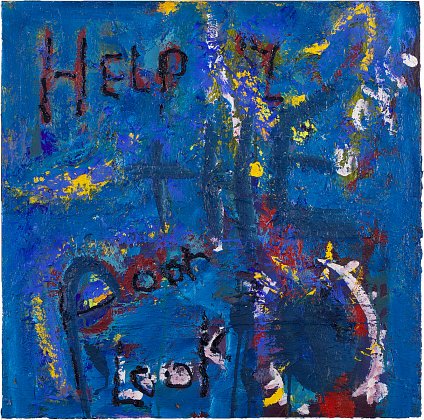
2014-09-03
Pretty Clear
960 x 960
Oil, Pastel
